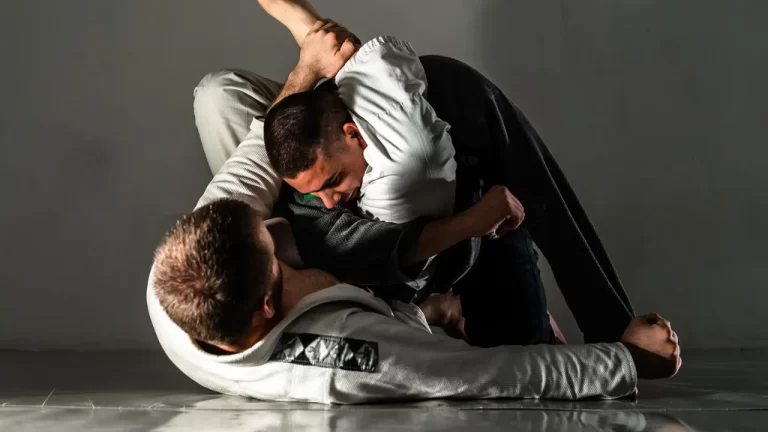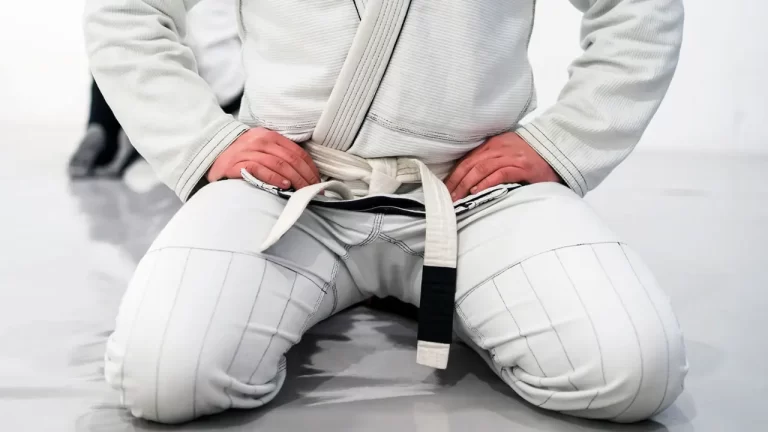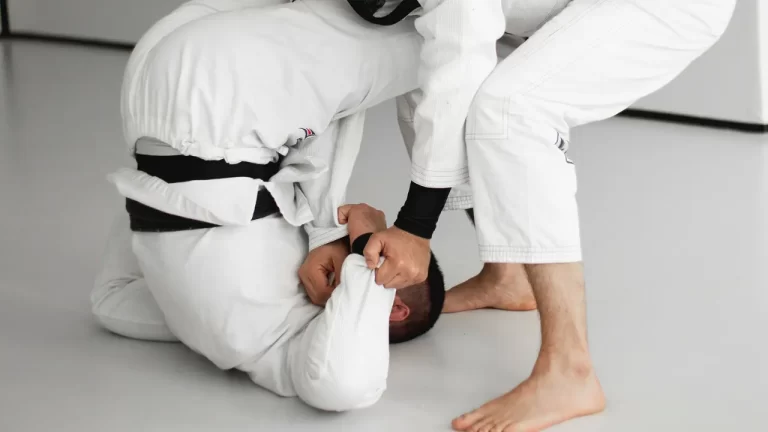BJJ vs Wrestling: The Similarities and Differences
Martial arts, besides being for self-defense and a competitive sport, also serve as a catalyst for personal growth, allowing individuals to cultivate both physical prowess and mental discipline. Among the myriad martial arts forms that exist, Brazilian Jiu-Jitsu (BJJ) and Wrestling hold a special place, admired for their unique techniques and philosophies.
Let’s take a look at the difference between wrestling and Jiu-Jitsu in this article. They are both extremely popular martial arts, and for good reason!
Examining Brazilian Jiu-Jitsu
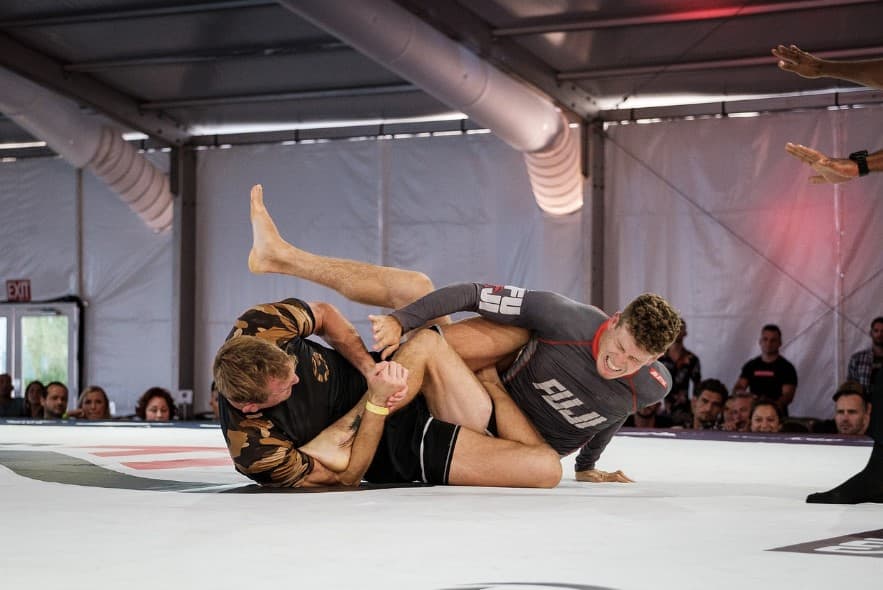
BJJ stands as a martial art that emphasizes ground combat and advanced strategy. Rather than focusing on striking or stand-up fighting.
A BJJ fighters strategy centers on grappling, applying complex holds and maneuvers to subdue opponents. While it is a test of strength and agility, the practice also involves a comprehensive study of detailed submission methods.
Understanding the differences between Jiu-Jitsu and wrestling can help inform your decision about which one to start. Jiu-Jitsu is a strategic ground fighting technique, that emphasizes patience and technique over strength.
Both sports teach control, escape, and attack from various positions which can be advantageous in self-defense. The choice between BJJ and wrestling depends on your personal interests and training goals.
Characteristics of Wrestling
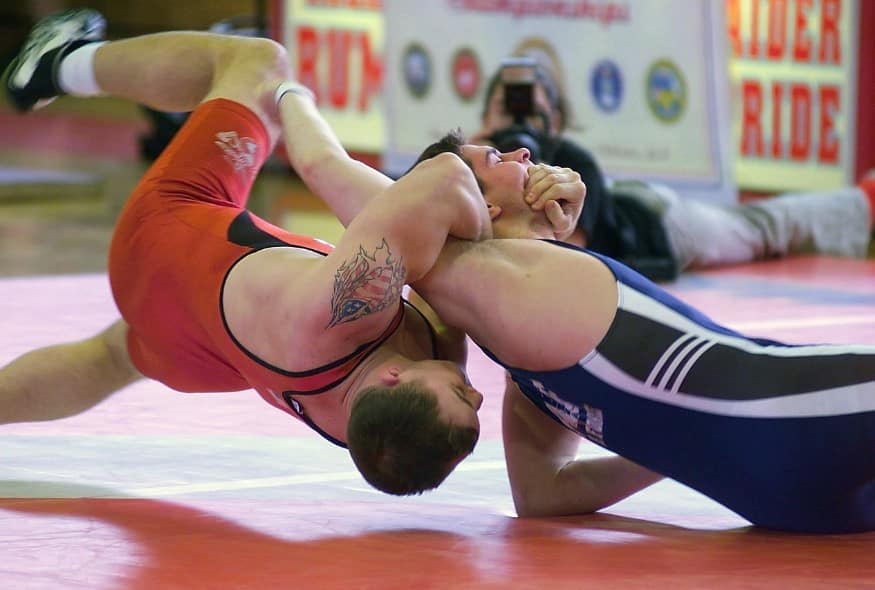
As a highly demanding sport, wrestling requires the development of upper body strength, speed, and agility, with a strong emphasis on physical dominance over the opponent. However, wrestling does lack submission holds, which are integral to many martial arts. As a result, in an actual combat situation, wrestlers must effectively maintain control over their opponent, to the point of being able to employ strikes to end the fight.
The ultimate goal in wrestling matches is to pin the opponent’s shoulder blades to the mat which leads to an immediate victory. In contrast, wrestling is a strength-based sport, requiring agility and intelligent decision-making for control over the opponent.
The specific techniques used in freestyle wrestling provide effective self-defense skills, allowing one to control their opponent and the progression of the encounter.
Both BJJ and freestyle wrestling will enhance your martial arts skills and boost your confidence in self-defense.
Differences in Training Approaches
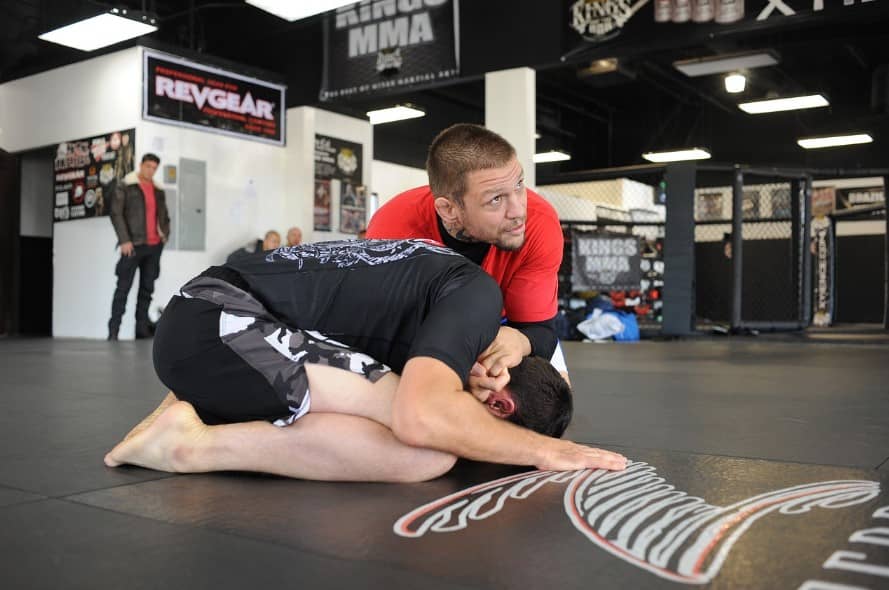
Wrestling and Jiu-Jitsu are very similar and can look like the same thing to the untrained eye, but there are some key differences that we will discuss.
Training in Brazilian Jiu-Jitsu (BJJ)
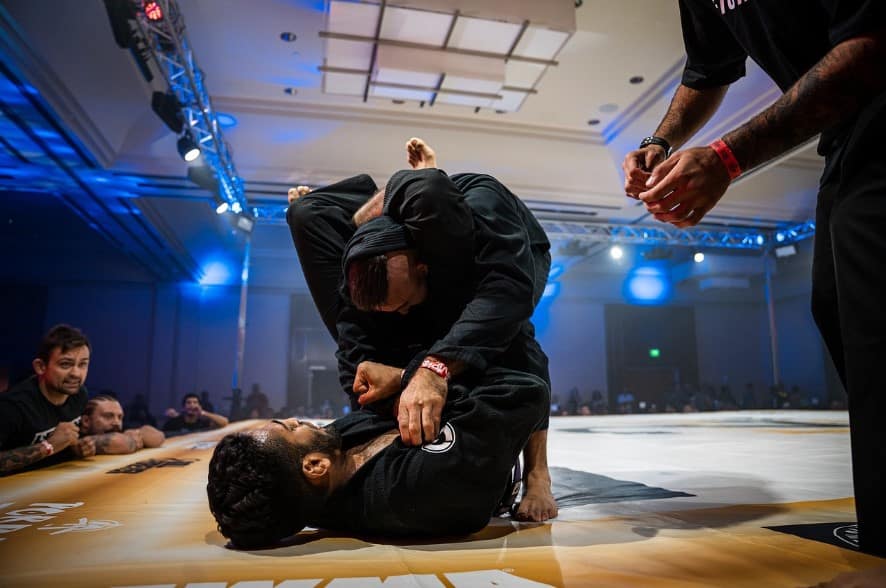
Jiu-Jitsu focuses on controlling the opponent with techniques that force him or her to submit. The distinct style of BJJ involves close-contact grappling, where the objective is to make your adversary submit via joint locks and chokeholds.
The BJJ practitioners usually begin sparring from a seated position, focusing on guard retention and a variety of guard techniques.
Guard is a position in Jiu-Jitsu which basically means the bottom position, and your goal from this position is to not let your opponent pass your legs.
Wrestling Training Sessions
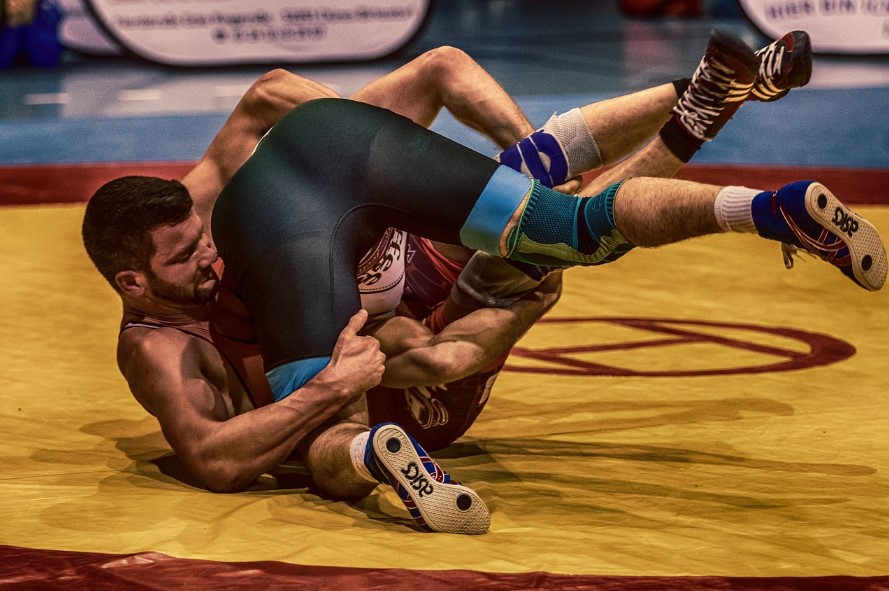
Unlike BJJ, freestyle wrestling focuses on a different approach. The primary aim of wrestling is not to coerce submission from the opponent but rather focus on gaining and maintaining a dominant position.
It lays a strong emphasis on transitions, pinning combinations, takedowns, and techniques to escape or reverse holds. As a wrestler, the practitioner spends a large part of their training standing up, honing their skills to execute takedowns effectively and efficiently.
More often than not, a wrestling class is designed and structured in a way that it systematically incorporates different elements of the sport. The intent is to build strength, improve technique and enhance endurance of the practitioners.
Contrasting Brazilian Jiu-Jitsu and Wrestling

Brazilian Jiu-Jitsu and Wrestling, although falling under the broad umbrella of martial arts, exhibit distinguishable characteristics that make each unique.
The training methodologies for both Brazilian Jiu-Jitsu (BJJ) and wrestling vary significantly, shaped by the nature and objectives of each martial art. The differences in training highlight the unique challenges and advantages that come with each discipline.
BJJ training prominently features the practical performance of techniques against a resisting opponent. A standard BJJ training regimen focuses on drilling techniques, positional sparring, and free sparring, also known as rolling.
During rolling, students play out live combat scenarios in a controlled environment, allowing them to build practical fighting skills and adapt their techniques to real-world opposition. While less physically demanding than wrestling, BJJ requires technical finesse and strategic thinking which, when mastered, can provide a significant advantage during competitive matches.
Wrestling, on the other hand, embodies a more physically strenuous training approach. It places considerable emphasis on enhancing one’s strength, speed, and conditioning.
Wrestlers often engage in repetitive drilling, practicing the same, contrasting in resulting consequently scenes competitive and origins movements or sequences until they achieve fluidity and precision. Live wrestling sessions, which parallel BJJ’s rolling sessions, are often intense and fast-paced, inducing a high level of exertion.
These training sessions foster the development of brute strength, tenacity, and endurance inherent in competitive wrestling.
The difference in these approaches stems from the philosophies underpinning each art. BJJ, with its roots in a philosophy emphasizing technique over brute strength, encourages slower-paced, strategic, ground-combat techniques.
In contrast, wrestling, a sport heavily tied to physicality, cultivates a culture of raw power and speed, promoting a faster, high-intensity approach.
Both training styles, while distinctly different, reward dedication and perseverance. The choice between BJJ and wrestling will ultimately hinge on an individual’s personal preference for a more strategic, technical training or a faster, physically demanding regimen.
Characteristics of Wrestling

Wrestling methods require a significantly substantial physical condition, including cardiovascular endurance, explosive strength, agility, and flexibility.
These attributes are developed through rigorous training sessions that focus on high-intensity drills, strength and conditioning exercises, and repeated practice of takedowns and pinning techniques.
Unlike BJJ fighters, in wrestling you will be wearing wrestling shoes when you step on the mat.
Someone seeking to train in wrestling should anticipate not only acquiring martial arts skills but also substantial physical conditioning.
The principles of wrestling encourage physical dominance over an opponent. Whether it’s a takedown or a pin, the wrestler seeks to overpower their competitor and maintain control until the match’s conclusion.
More than just a physical challenge, wrestling also tests the psychological fortitude of its practitioners. Wrestlers must possess mental toughness, discipline, and determination to endure grueling training sessions, face challenging opponents, and strive for continuous improvement.
Wrestling offers an avenue for character development, instilling qualities such as tenacity, resilience, and perseverance.
Wrestling has a rich history and tradition, being part of the Olympic Games since ancient times. Training in wrestling promotes pride, honor, and a sense of belonging to a time-honored tradition.
Many wrestling programs foster a team environment, where individuals train together, support
Pros and Cons of Brazilian Jiu-Jitsu (BJJ) for Self-Defense
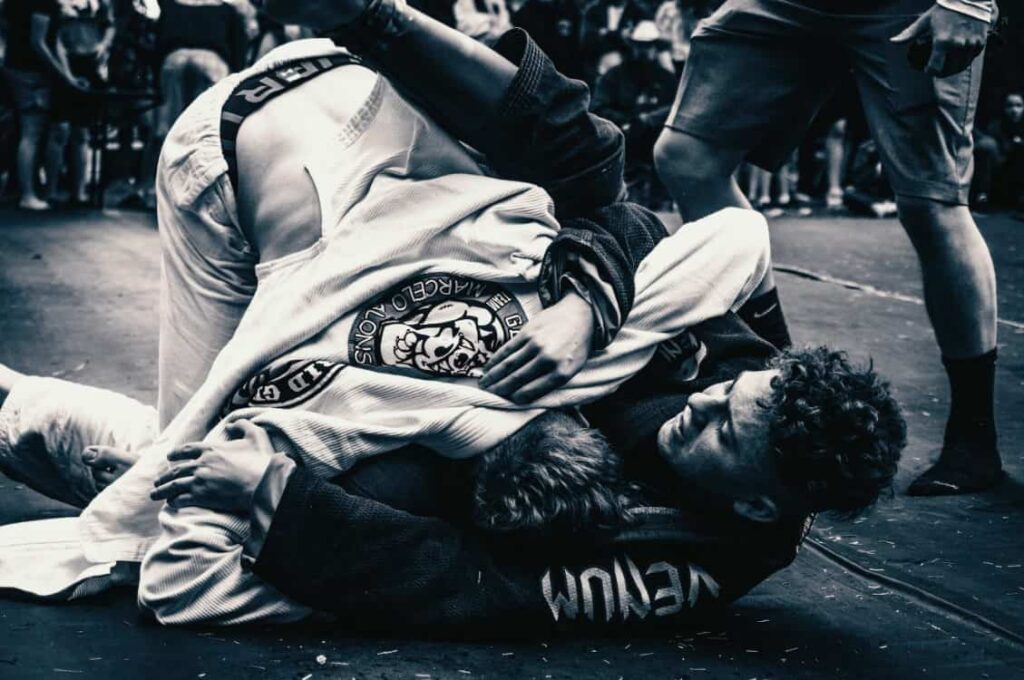
Brazilian jiu-jitsu emphasizes a fighting style that is built around ground fighting techniques and submission moves involving joint-locks and chokeholds. It is a martial art that positions its practitioners to effectively defend against a stronger and larger opponent.
Pros:
One of the main advantages of training in Brazilian Jiu-Jitsu (BJJ) is its effectiveness in real-life self-defense situations. BJJ focuses on ground fighting and submission holds, which are essential skills for defending oneself in close-quarters combat.
By learning BJJ, practitioners gain the ability to control and submit opponents regardless of their size or strength. This makes BJJ a practical martial art for individuals looking to develop self-defense skills.
Another advantage of training in BJJ is its emphasis on leverage and technique over brute strength. BJJ techniques are designed to allow smaller individuals to overcome larger opponents by using leverage and proper body mechanics. This aspect of BJJ makes it suitable for people of all ages, genders, and body types.
It promotes the idea that technique and strategy can overcome physical attributes, providing a level playing field for practitioners.
BJJ also offers a unique mental and physical challenge. The art requires practitioners to think strategically, problem-solve, and adapt to different situations on the mat. This mental stimulation can improve cognitive abilities, decision-making skills, and overall problem-solving capabilities.
Additionally, BJJ provides a full-body workout that enhances strength, flexibility, endurance, and cardiovascular fitness. It promotes physical well-being and can contribute to weight loss and muscle toning.
Furthermore, training in BJJ fosters a strong sense of community and camaraderie. BJJ academies often have a supportive and inclusive environment, where practitioners help each other learn and grow. The training partners become like a second family, creating a positive and motivating atmosphere.
This sense of community can greatly enhance the overall training experience and make it more enjoyable and fulfilling.
Lastly, BJJ offers a path for personal growth and self-improvement. The art requires discipline, perseverance, and dedication to progress. Through consistent training, practitioners develop qualities such as patience, humility, resilience, and mental toughness.
BJJ teaches valuable life lessons that extend beyond the mat, helping individuals become more confident, focused, and self-aware.
Cons:
Potential drawback of training in BJJ is the learning curve. BJJ is a highly technical martial art that requires a significant amount of time and effort to become proficient. The techniques and strategies in BJJ can be complex and intricate, requiring a deep understanding of body mechanics and leverage.
This means that beginners in BJJ may feel overwhelmed and frustrated initially, as they try to grasp the fundamentals and adapt to the unique style of grappling.
Another potential drawback of training in BJJ is the risk of injury. While injuries can occur in any sport or martial art, BJJ involves a high level of physical contact and joint manipulation, which can put a strain on the body.
Joint locks, chokes, and submissions are integral parts of BJJ, and if not executed properly, they can lead to sprains, strains, or even more severe injuries.
Additionally, the close proximity and constant physical engagement in BJJ can increase the risk of accidental collisions or awkward landings, further increasing the likelihood of injury.
A potential drawback of BJJ is the limited emphasis on stand-up techniques. BJJ fighters primarily focus on ground fighting and submissions, with less emphasis on takedowns and stand-up techniques.
While BJJ practitioners do learn takedowns, it is not as comprehensive as wrestling, which places a heavy emphasis on takedowns and controlling the opponent from a standing position. This can be a disadvantage if BJJ practitioners find themselves in a situation where the fight starts or transitions to a standing position.
Without a solid foundation in stand-up techniques, BJJ fighters may struggle to effectively take down or control an opponent who is proficient in wrestling or other stand-up martial arts.
Lastly, a potential drawback of training in BJJ is the limited focus on conditioning. While BJJ training does involve physical exertion and can be physically demanding, it may not provide the same level of conditioning as wrestling.
Wrestling training often includes intense cardiovascular workouts, strength training, and agility drills to develop the necessary physical attributes for the sport. In contrast, BJJ fighters tends to focus more on technique and strategy, with less emphasis on specific conditioning exercises.
This means that BJJ fighters may need to supplement their training with additional conditioning exercises to improve their overall physical fitness and endurance.
When considering wrestling as a form of self-defense, there are several attributes that make it a potent discipline to incorporate in your arsenal.
However, like any martial art, it also suffers from certain limitations.
The Pros and cons of Wrestling for Self-Defense
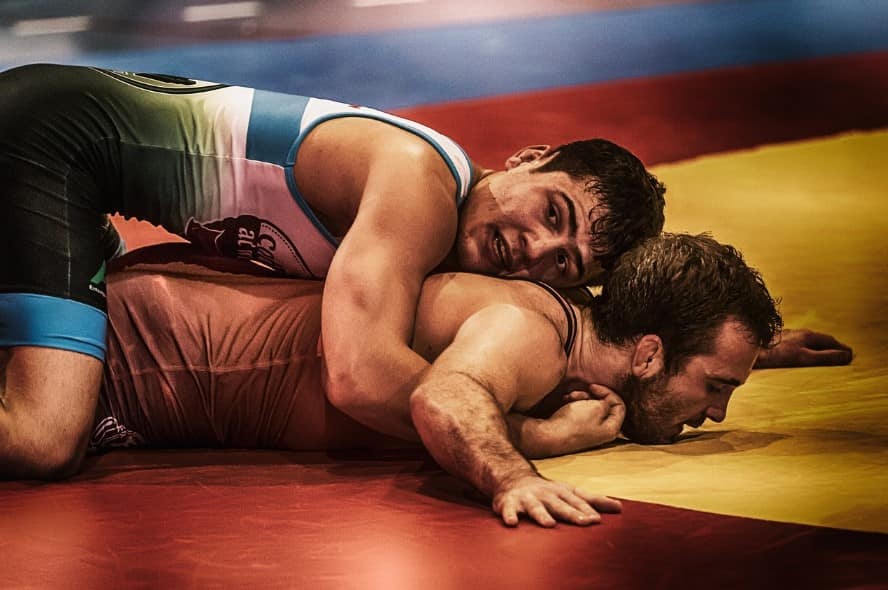
Pros: Wrestling provides an excellent foundation for other martial arts. The skills and techniques learned in wrestling, such as body control, balance, and leverage, can be transferred to various combat sports like Brazilian Jiu-Jitsu (BJJ) or mixed martial arts (MMA).
Wrestlers often have an advantage in these disciplines due to their ability to dictate the fight’s position and control their opponents on the ground.
One of the main advantages of training in wrestling is its focus on takedowns and control. Wrestling places a strong emphasis on mastering takedown techniques, which can be highly effective in real-life self-defense situations.
By training in wrestling, individuals can develop the ability to take down an opponent and maintain control over them on the ground, which can be a valuable skill in various combat scenarios.
Another advantage of wrestling is its emphasis on physical conditioning. Wrestling requires a high level of strength, endurance, and agility. Through intense training sessions, wrestlers develop exceptional cardiovascular fitness, muscular strength, and explosive power.
This physical conditioning not only improves their performance in wrestling but also translates to other sports and activities, enhancing overall athleticism.
Cons: Wrestling is primarily a competitive sport with rules and regulations. While these techniques can be effective in a controlled environment, they may not always translate well to real-life self-defense situations.
Wrestling techniques often involve close-quarters grappling and takedowns, which may not be practical or safe in a street fight where multiple opponents or weapons could be involved.
Another disadvantage of wrestling for self-defense is its limited emphasis on striking and defending against strikes.
In wrestling matchups, the objective is to take down and control an opponent using grappling techniques. While this can be useful in certain situations, it does not address the need to defend against punches, kicks, or other strikes that may be encountered in a real-life self-defense scenario.
Without proper training in striking and defending against strikes, a wrestler may be at a disadvantage when facing an attacker who is not bound by the rules of a wrestling match.
Wrestling: The Intense Sport

Wrestling is considered an intense sport for a host of reasons. Firstly, it demands an incredibly high level of self-discipline and dedication. The relatively aggressive and high-impact nature of the sport shapes much of this intensity.
Further enhancing this intensity is the strategic component of wrestling. Athletes must continually analyze their opponents, identify weaknesses, and predict their next moves.
This requires a blend of critical thinking skills and heightened awareness, adding a cognitive layer to the physical intensity. Additionally, successful grappling and pinning in wrestling heavily rely on strength, agility, and balance.
These skills don’t come overnight, implying that wrestling is not just a test of physical endurance, but also a test of mental fortitude and tactical acumen.
BJJ: The Gentle Art
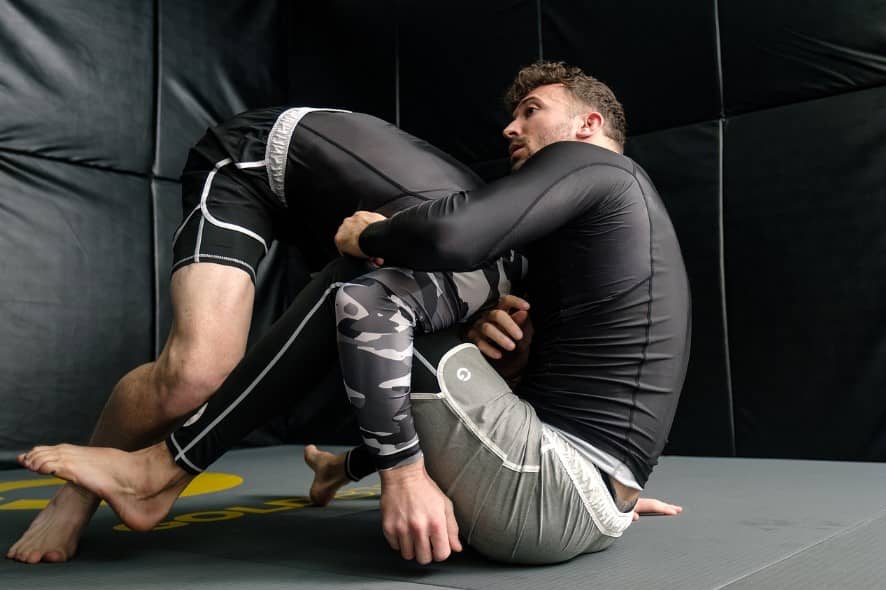
On the other side of the spectrum, Brazilian Jiu-Jitsu (BJJ) differs significantly from wrestling both in its ethos and technical aspects.
While wrestling is more aggressive in terms of intensity and physicality, BJJ tends to focus more on technique over sheer strength.
It hinges on the principle of leverage, suggesting the concept that a smaller, weaker individual can successfully defend themselves against a larger, stronger opponent by utilizing proper technique, leverage, and taking the fight to the ground.
This is a core philosophy that embodies BJJ. This focus on technique and leverage makes BJJ an appealing choice for people of different age groups and body types. It emphasizes patience and careful maneuvering over brute force.
Conversely, it can also mean a slower pace and longer learning curve compared to wrestling.
While it’s possible to leverage physical advantages, a BJJ fighter has a reliance on tactical expertise that significantly distinguishes it from the more aggressive wrestling style.
Frequently Asked Questions
These are some questions I came across from the combat sport community surrounding both wrestling and Jiu-Jitsu.
Does BJJ translate to wrestling?
If you have a background in BJJ, you will not be starting from the bottom of the heap. BJJ and wrestling are from the same combat family tree based on their history, so some of your BJJ training will translate well for you. What you will find the most challenging, is the takedowns, as wrestling is mostly a stand-up grappling combat sport.
What is BJJ’s weakness?
The weakness of BJJ is that it doesn’t do stand-up fighting or much stand-up grappling. A BJJ fighter will have a difficult time taking a wrestler to the ground, and will also run the risk of getting punched in the face by a striker many times before being able to bring them to the ground.


